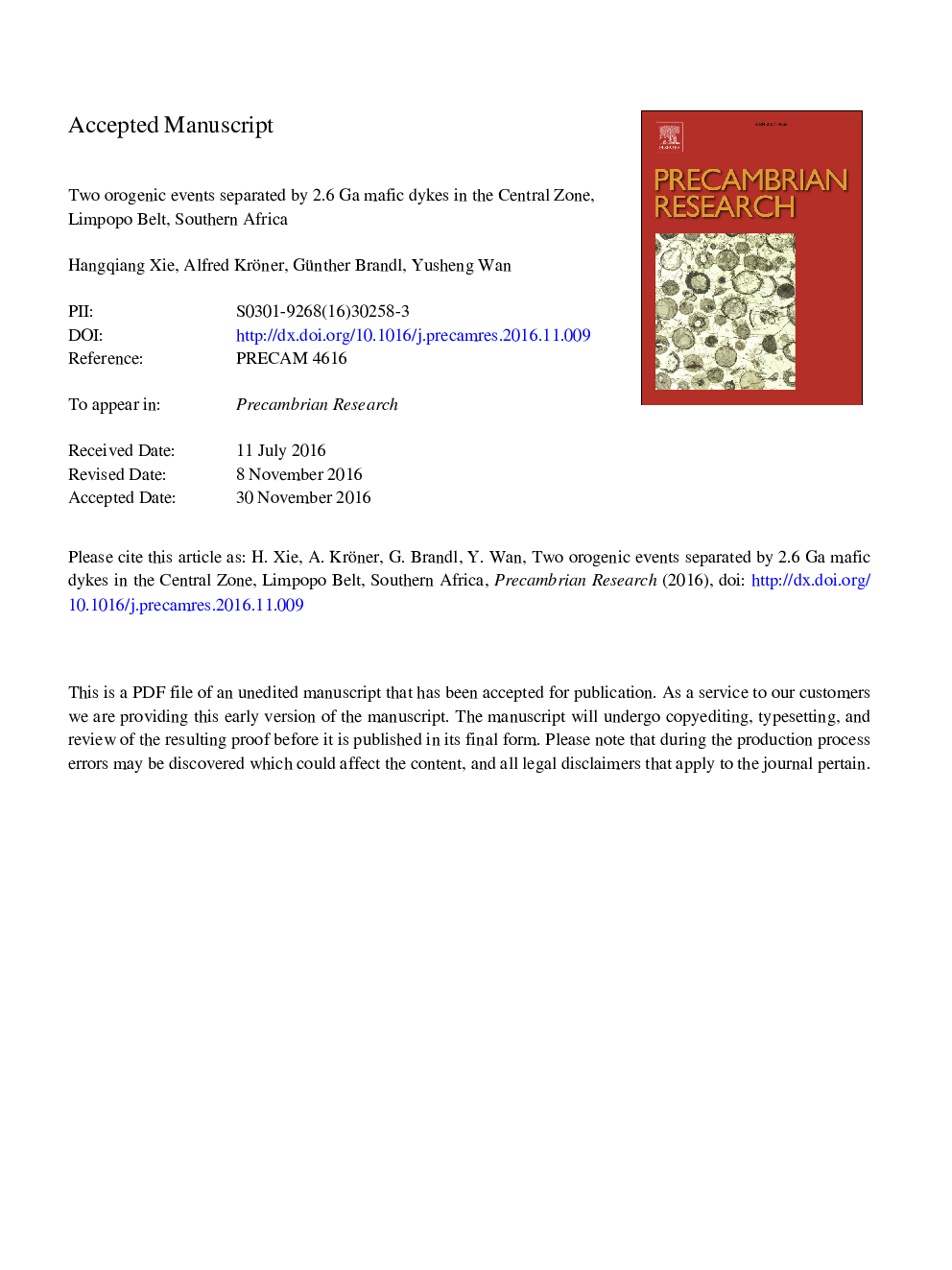| Article ID | Journal | Published Year | Pages | File Type |
|---|---|---|---|---|
| 5784925 | Precambrian Research | 2017 | 44 Pages |
Abstract
The Limpopo Belt of southern Africa is a typical early Precambrian orogen that experienced two high-grade metamorphic events which are a key for understanding its tectonic evolution. There has been a long-standing debate on whether the Neoarchean (c. 2.65 Ga) or the Palaeoproterozoic (c. 2.0 Ga) tectono-thermal event records continental collision. The clear field relationship between deformed mafic dykes and the surrounding rocks is a powerful tool to help reconstructing the deformation history. Mafic dykes intruded the 3.3-3.1 Ga Sand River Gneiss Suite in the Central Zone of the Limpopo Belt near Musina, South Africa, and were classified in the past into older Causeway dykes and younger Stockford dykes according to assumed field relationships, deformational patterns, and doubtful Rb-Sr dating. Our detailed field observations suggest that both dyke types belong to the same generation and cut the foliation and anatectic melt veins in the Sand River Gneiss Suite. They also experienced strong post-emplacement deformation and high-grade metamorphism, so they separate two high-grade metamorphic events. SHRIMP zircon dating yielded a likely emplacement age of â¼2.6 Ga for two Causeway dyke samples as well as metamorphic ages of 2002 ± 4 Ma and 2002 ± 8 Ma. The zircons of two Stockford dyke samples yielded igneous emplacement ages of 2607 ± 5 and 2604 ± 6 Ma, respectively, and metamorphic ages of 2014 ± 13 Ma and 2005 ± 11 Ma. Combining these data with similarities in the dyke geochemistry, we propose that the Causeway and Stockford dykes formed at the same time, but had different orientations. Our preferred tectonic model for the evolution of the Central Zone of the Limpopo Belt involves continental collision between the Zimbabwe and Kaapvaal Cratons at â¼Â 2.65 Ga, followed by intracontinental transpressive orogeny and high-grade metamorphism at â¼2.0 Ga. We therefore propose that the widespread â¼2.6 Ga mafic dykes in the Central Zone formed in an extensional environment during post-collisional orogenic collapse. Both the Neoarchaean and Palaeoproterozoic orogenic events resulted in high-grade metamorphism and are separated in time by emplacement of the â¼2.6 Ga mafic dykes.
Related Topics
Physical Sciences and Engineering
Earth and Planetary Sciences
Geochemistry and Petrology
Authors
Hangqiang Xie, Alfred Kröner, Günther Brandl, Yusheng Wan,
